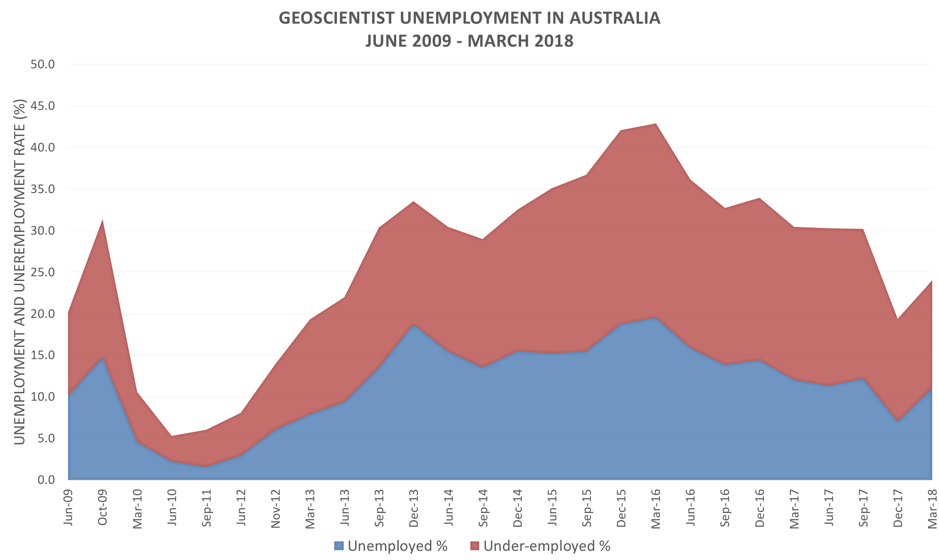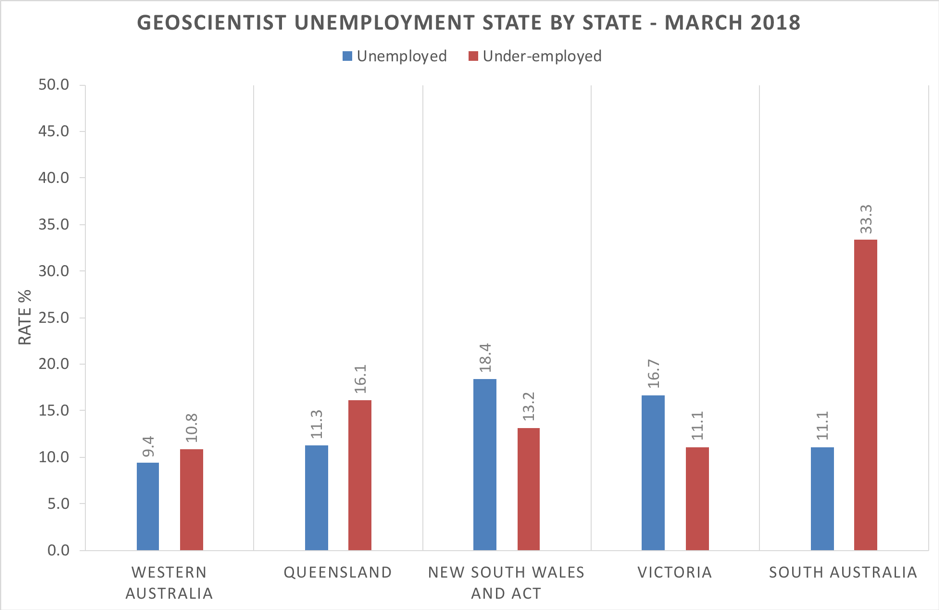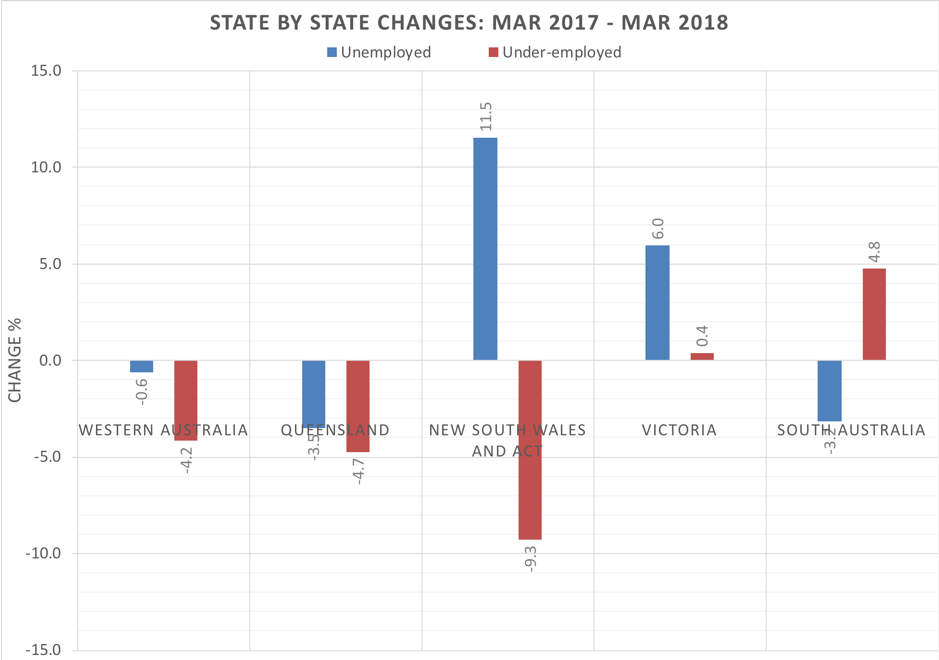The employment recovery amongst Australia’s geoscientists has taken a step backward in the opening quarter of 2018 – cooling by more than four percent after a full year of improved employment outcomes over calendar 2017.
Unemployment nationally among geoscientists – who are prominent in the mining and exploration sectors – increased from 7.0% in at the end of December 2017 to 11.1% at the end of March 2018. Underemployment remained little changed at 12.9% at the end of March 2018 compared with 12.3% at the end of December 2017.

Geoscientist employment and under-employment in Australia June 2009 – March 2018
The survey again enjoyed strong support from Australian geoscientists with almost 500 responses received from across Australia.
AIG spokesperson, Mr Andrew Waltho, described the latest results as disappointing and evidence that the recovery in geoscientist employment, especially in exploration and mining, “has some way to go”.
“The final quarter of 2017 marked the fourth successive quarter of employment growth, so the decrease in employment prospects during the first quarter of 2018 is disappointing, particularly for those who have been seeking work for more than a year,” Mr Waltho said.
“The trend over the past 12 months, however, remains positive and we hope that this setback proves to be due to seasonal factors, affecting mineral exploration in particular, and isn’t a sign that exploration and mining activity in Australia is again showing signs of cooling in Australia,” he said. “It will be informative to compare these results with Australian Bureau of Statistics’ mineral exploration expenditure and drilling activity statistics for the first quarter of 2018, when they are released in a couple of months.”
Mr Waltho said long term unemployment remained a real concern, with almost 70% of jobless geoscientists being out of work for more than 12 months.
“This job market environment contributes to a real loss of talent as unemployed geoscientists struggle to remain in touch with developments in their profession,” Mr Waltho said. “Helping unemployed geoscientists maintain their skills and maintain contact with peers through delivering professional development opportunities therefore remains one of AIG’s highest priorities.”
Every state experienced an increase in both unemployment and underemployment during the March 2018 quarter. In the states with significant numbers of geoscientists seeking work, Western Australia had the lowest unemployment, followed by South Australia and Queensland. The highest level of unemployment was recorded in New South Wales and the ACT. Self-employed geoscientists generally fared similarly or better than those in company employment, except in South Australia.

State by state geoscientist unemployment and underemployment, March 2018
During the 12 months between the end of March 2017 and March 2018, unemployment rates fell in Queensland and South Australia, remained little changed in Western Australia, but increased markedly in other states. Underemployment amongst self-employed geoscientists decreased, or showed little change, in all states except South Australia where it increased by almost 5%.
The next survey will be conducted from 30th June 2018.

Unemployment and underemployment trends – March 2017 to March 2018
Media
Andrew Waltho, Brisbane, 0412 426 764, andrew.waltho@aig.org.au